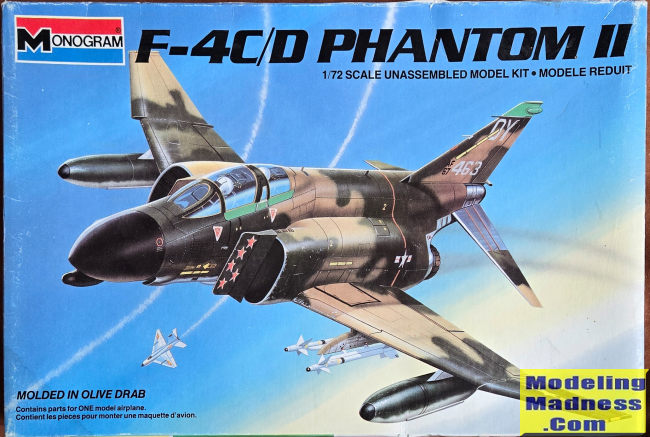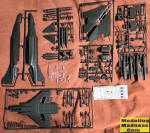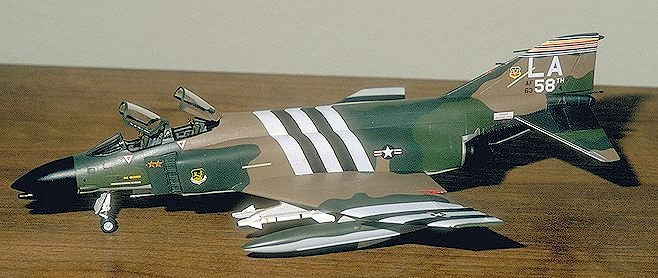
Monogram 1/72 F-4C/D Phantom II
| KIT #: | 5439 |
| PRICE: | $ |
| DECALS: | One option |
| REVIEWER: | Scott Van Aken |
| NOTES: | 1985 release |

| HISTORY |
| THE KIT |
 Monogram's
1/72 F-4 kits were probably the first really well done F-4s produced in this
scale. Prior to this there had been kits by Revell, Hasegawa, and Airfix to
name several, but they were not up to the detail level of the Monogram
offerings. Were these perfect kits? No they were not and had a few glitches
that were fairly easily corrected if one wanted to put forth the effort.
Despite these, many of us built quite a few of these and still have them on
our display shelves.
Monogram's
1/72 F-4 kits were probably the first really well done F-4s produced in this
scale. Prior to this there had been kits by Revell, Hasegawa, and Airfix to
name several, but they were not up to the detail level of the Monogram
offerings. Were these perfect kits? No they were not and had a few glitches
that were fairly easily corrected if one wanted to put forth the effort.
Despite these, many of us built quite a few of these and still have them on
our display shelves.
Monogram did both a USAF F-4C/D and a USN F-4J. The J model was molded in light grey plastic and this one was in a dark olive brown. Monogram was always known for its highly detailed cockpit tubs and this one is no exception. There are no decals for the instrument areas so those need to be painted in place. Only the seat backs are separate and they have belt detail. Crew members are provided if you wish to use them.
Once the cockpit is constructed and painted, it is inserted and the fuselage halves are closed. No nose weight is required. With the fuselage done, the wings are assembled and installed. The horizontal stabilizers are shown being installed at this time, but most of us will wait until after painting. Note that the stabs are proud of the fuselage by a mm or two. This is not correct and so the modeler will need to remove some of the offending plastic from the join area to make it fit flush. Also note that I'm pretty sure the triangular reinforcement was a post war addition so if using kit markings, this should be removed as well if you want to be totally accurate.
There is no intake trunking as this was not the norm when this kit was designed, but there is a back wall that one paints black. Attaching the intake is one area that causes some concern. A portion of the lower intake is molded into the wing and adding the rest of the outer intake means there is a seam that needs to be fixed. In my past experience, there is also a gap that may need to be filled with a sliver of plastic. This, of course, results in loss of detail. Another area that needs some work is the attachment of the small avionics cooling scoops at the front. These will need filler and some reshaping once installed.
Landing gear and doors are very nicely done and quite sturdy. The kit provides separate flaps so those can be posed slightly lowered. To have them in the neutral position requires some minor surgery as the attachment pins will need to be removed. The C/D kit provides USAF type items for under the wings. This includes the proper shape pylons for the missiles as well as an early ECM pod and a centerline gun pod. The kit does not include a centerline fuel tank so if not using the gun pod, holes will need to be filled. Sparrows and Sidewinders are included and the kit offers the proper, shorter burner cans. For the clear bits you can use the multi-piece offering to have the two canopies open or a single-piece affair.
Instructions are well done with generic and FS 595 color references. The sole markings option is the box art aircraft of Steve Ritchie in an SEA camouflage scheme. The green fin tip will need to be painted. The small decal sheet is nicely printed for the time, somewhat thick and glossy, and should still be viable. There are a TON of aftermarket options for this kit.
| CONCLUSIONS |

September 2024
Back to the Previews Index Page
Back to the Previews Index Page